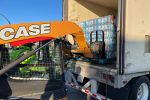Ongoing drought conditions putting strain on cattlemen
By Kyle Mooty
LPR Editor
With 92 percent of Texas experiencing some level of drought and 29.6 percent of the state experiencing extreme drought conditions or worse, times are particularly tough on livestock and their farmers.
Cattlemen around Texas had a big sale run following the July 4 holiday, which is normal, but this year was higher than usual.
Aside from the health of the livestock, cattle prices are expected to surge greatly in the next couple of years for a variety of reasons, according to David Anderson, an economist with Texas A&M Extension. The heat, water shortages, hay shortages, higher fuel prices, higher feed prices and higher fertilizer costs are among the reasons for the expected surge in cattle prices, yet tougher margins for producers.
“There is little hay production so it’s going to be a tough one in the coming months,” said Wayne Morse, Extension Agent for Texas A&M AgriLife Extension in Caldwell County. “Even now they’re feeding hay.”
Morse did say there were government subsidies available since Caldwell County became a Level 3.
Ponds and livestock tanks are found more empty than usual.
Shade is a must for the cattle in the sweltering Texas heat, but water is more important than ever.
“As long as the livestock are being taken care of, deaths shouldn’t be a problem,” Morse said. “Most deaths occur on leased places where they run out of water, or the tanks run dry.”
Texas A&M AgriLife Extension said last week that at $3.50 to $4 per day to feed a dry cow – or about $400 to feed over the next 100 days – if conditions don’t improve, spending levels could exceed future increases in calf prices.
“We are shrinking the cow herd at such a rate that beef production is going to decline,” said David Anderson, an agricultural economist with Texas A&M Extension. “We are going to have even fewer cows next year, and we will see reduced production for the next two years. I know producers want to hold onto cattle to be prepared for those high prices, but that long of a wait is going to be very difficult, particularly with feed costs and this ongoing drought.”
Cattlemen are being forced to cull their herds due to food shortages and rising costs in other areas, many due to the drought. Anderson believes it will take two or three years for cattlemen to return their herds to normal size.
“Drought is something that really weighs on people,” Anderson said. “I don’t think there’s anything worse because it affects everyone and covers such large areas. It can take multiple seasons to recover, especially when we are talking about range animal production.
“After a drought, you will typically see fewer calves the next year due to the stress the drought put on the cows. There is also the time required for range and pastures to recover. A one-year drought may ruin a row crop for a year, but for a cattle operation that depends on grasses, we can be looking at multiple years to recover.”
There is also the possibility of flies and parasites due to the hot temperatures, according to AgExplore, which noted the Texas Blacklands are particularly vulnerable of this problem.



